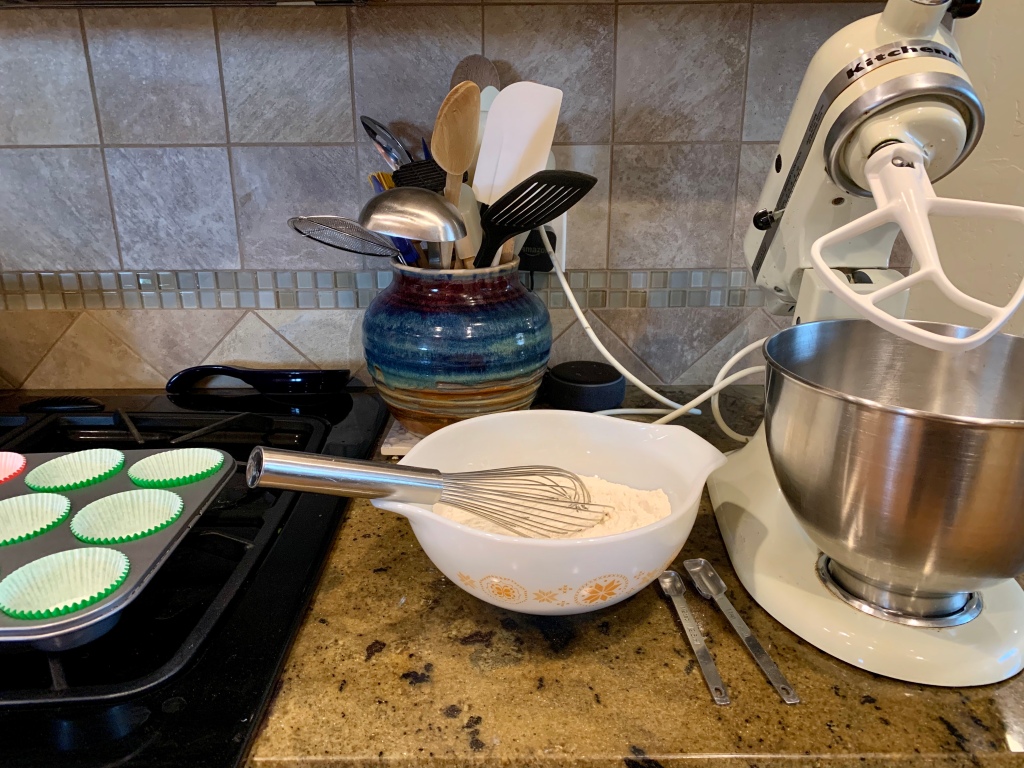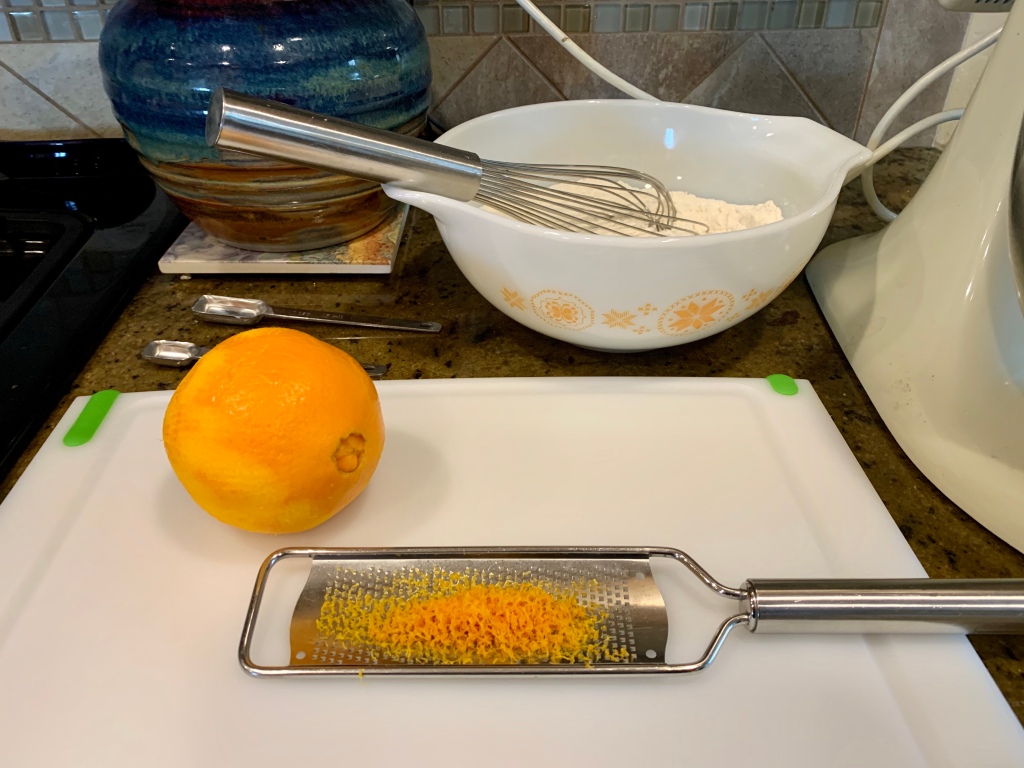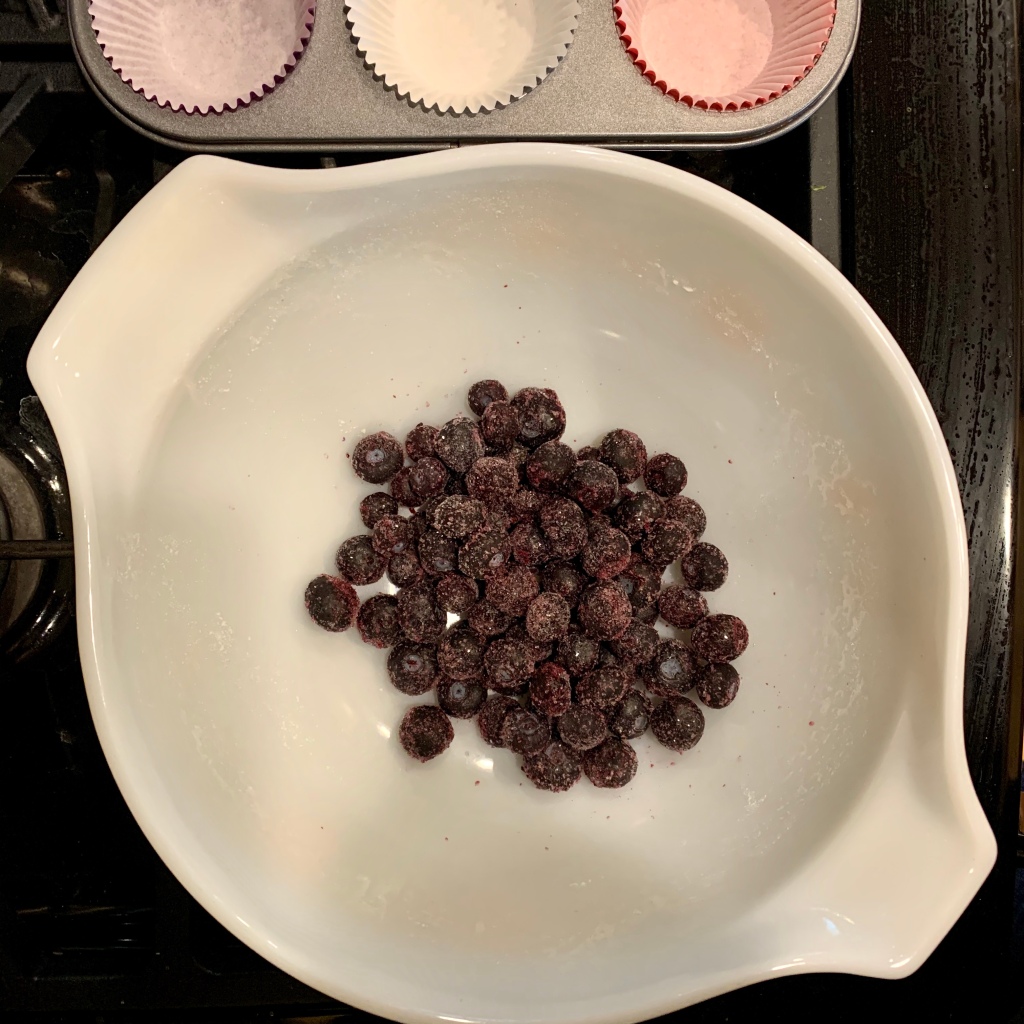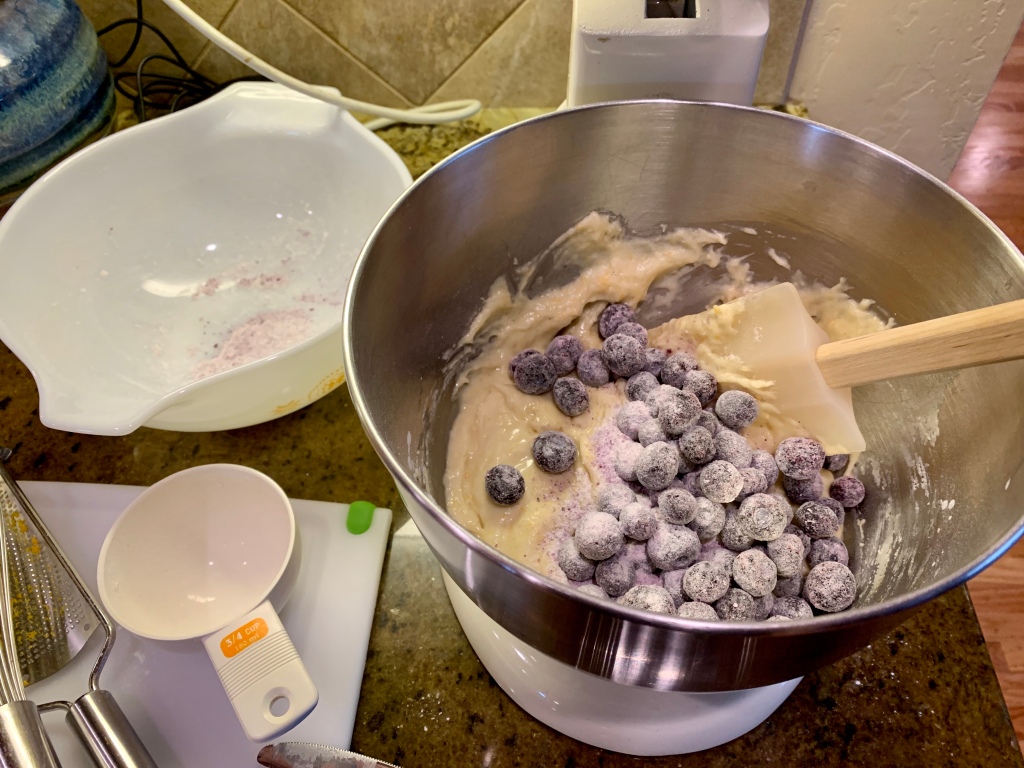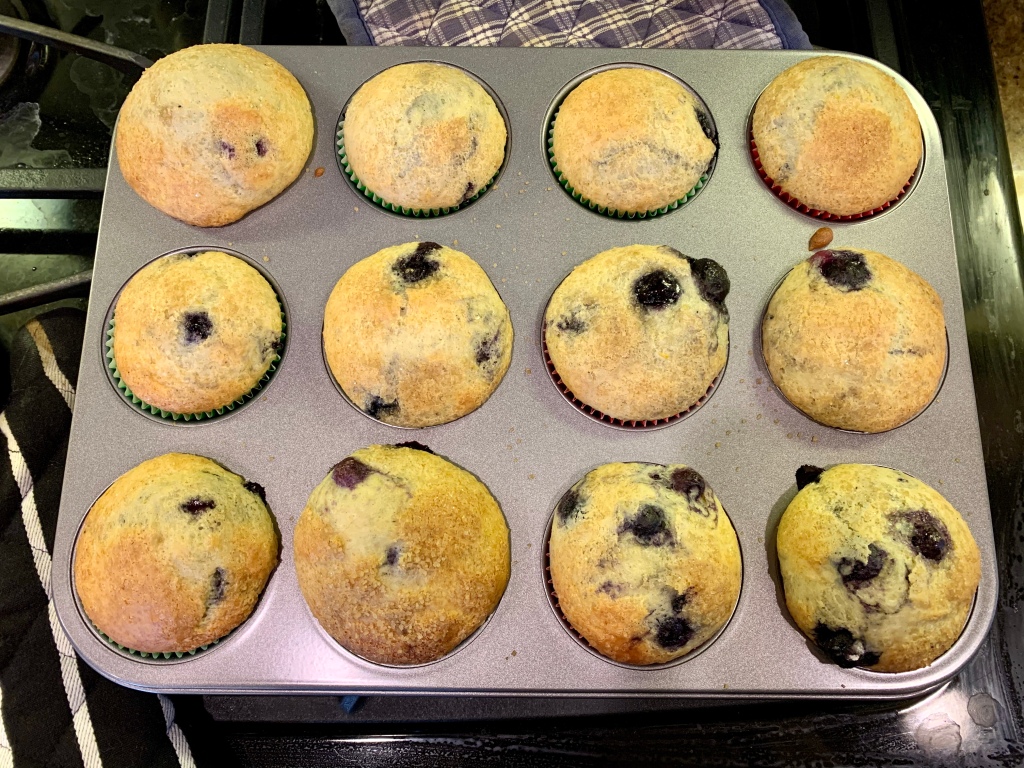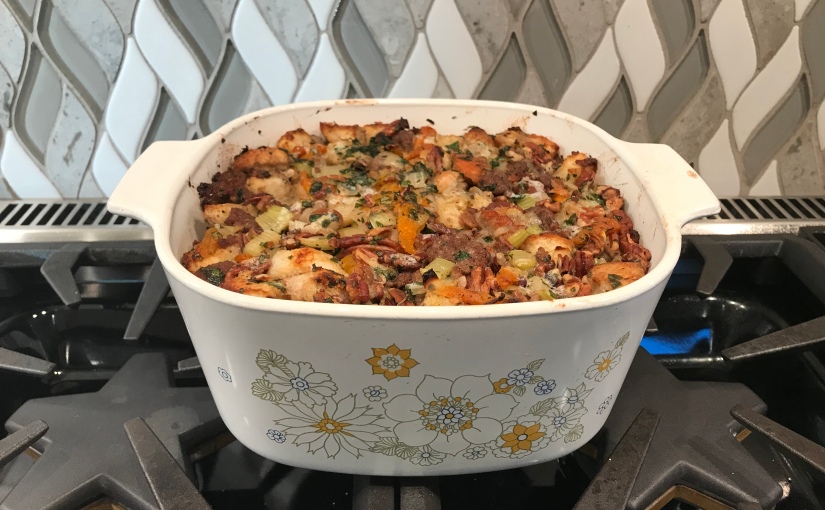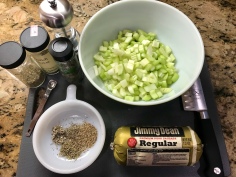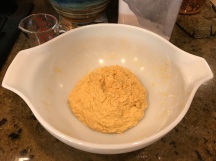This is the moistest, tenderest, most flavorful pot roast I’ve ever made. It’s a little bit time-consuming, but well worth it for the end result! There are a few things I think make this recipe work so well: 1) Bacon provides smoke, salt and richness that really enhance the dish. 2) Dried mushrooms pack an intense punch for even more flavor. 3) Using two small roasts instead of one big one, and trussing them — this is something Cook’s Illustrated recommends, because it promotes even cooking. 4) Patience — don’t try to rush the cooking time.
I call this fool-proof because I messed up a lot of things along the way and it still came out great. First off, I chose a pot that was too small, because I was determined to use my Corning Ware, so I had to scoop out a bunch of the cooking liquid and cram the meat in sideways. Also I’m terrible at trussing, so it was starting to fall apart at the end. Most pot roast recipes recommend searing the roasts before cooking, but I didn’t bother, because they’re unwieldy and I always end up splashing myself with oil and I hate that step. And I miscalculated my prep time, so by the time I got the whole thing in the oven, dinnertime would have been pushed back to 9 p.m. (way too late for my 5-year-old). My husband whipped up some barbecued chicken as a plan B, and I stewed about not being able to eat the dish I’d been slaving over. Thankfully, pot roast tastes even better reheated the next day (more on that in the recipe below), so after it finished cooking, I let it cool a bit and then put it in the refrigerator and went to bed.
Adapted from Cook’s Illustrated‘s Italian-Style Pot Roast.
Serves 8
Ingredients
8 oz bacon, snipped into 1/2-inch pieces
2 medium onions, chopped
4 medium carrots, peeled and chopped
3 celery ribs, chopped
6 garlic cloves, sliced
1 1/2 cups red wine
2 tbsp tomato paste
2 14 1/2-oz cans diced tomatoes, drained
2 cups low-sodium beef broth
2 cups low-sodium chicken broth
1/2 oz dried mushrooms (porcini and/or others)
1/2 tsp red pepper flakes
2 tsp dried oregano leaves
2 bay leaves
2 3-lb boneless beef chuck roasts
salt and pepper
Preheat oven to 300 degrees.
In a large (at least 6-quart size) oven-safe pot, saute bacon over medium heat until fat has rendered and edges are starting to brown. Spoon out excess grease, reserving about 1 tbsp. Add onions, carrots and celery and cook until translucent, about 5 minutes. Add garlic and cook another 1 minute.
Add wine, tomato paste, diced tomatoes, mushrooms, red pepper flakes, oregano and bay leaves. Combine broths in a separate bowl.
Truss each roast tightly with kitchen twine. It doesn’t have to be pretty — you just want each roast to hold together in a roughly uniform shape while cooking. Season the roasts with salt and pepper, then nestle in the pot and pour in enough broth so that the meat is partially submerged. Bring to a boil.
Cover and bake for 3 1/2-4 hours, turning the meat at the halfway point. The roasts should be fork tender and falling apart. Remove the meat from the cooking liquid and let rest, covered with foil, for about 20 minutes.
(At this point you can return the meat to the pot and refrigerate overnight, if desired. This actually makes the next step a lot easier — skimming off the fat. In the fridge, the fat solidifies in a layer on top, which can be chipped away with a spoon. Then you can reheat the roast on the stove top.)
Set the (hot or reheated) meat aside. After skimming the fat from the surface, bring the cooking liquid to a boil and simmer to reduce a little into a sauce, about 30 minutes. You can use it as is or blend it with an immersion blender for a thick, rich sauce.
Slice the meat across the grain and pour a liberal amount of sauce on top. You might want more sauce in a gravy boat at the table. I actually ate spoonfuls of sauce by itself, it was so good!
Pictured: Corning Ware Spice O’ Life A-5-B Saucepot; Corning Ware Blue Cornflower P-332 Roaster; Pyrex Spring Blossom 2 403 Round Mixing Bowl; Pyrex Town and Country 501 Refrigerator Dish


